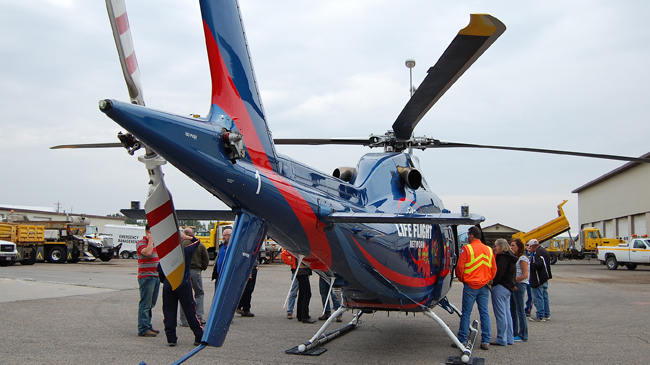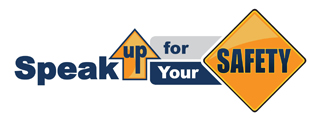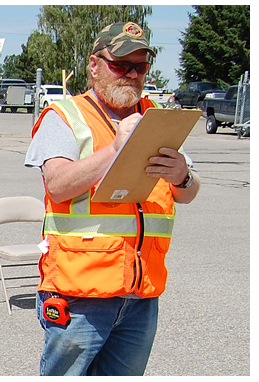

Help From Above
If you get hurt on the highway or lost in the backcountry, an air ambulance could be the difference between life and death.
District 6 employees learned about it at a memorable safety meeting Monday (Sept 18).
At the request of EEO/Safety/Training Coordinator Ron Butler (pictured below), an air ambulance landed in the Rigby yard, and the crew answered questions.
Here’s what crew members said:
- Life flights can get people to the hospital fast.
- Helicopters need room to land.
- Stand clear of the helicopter when blades and rotors are turning.
- Wait for crew members to direct you.
- When calling for help, provide GPS (Global Positioning System) coordinates, if possible. Otherwise, give landmarks – the more information the better.
- Police and other official agencies such as ITD call through the State Communications Center (StateComm) for a helicopter. Members of the general public dial 9-1-1.
- Availability of air-ambulance helicopters is subject to safety considerations, weather conditions, aircraft maintenance requirements, patient transport underway, and other factors
.
- Each helicopter carries medical equipment necessary for intensive care, if needed. Medical staff members perform medical services during transport.
- The Life Flight Network, which serves most of Idaho, has bases in Rexburg, Burley, Boise and Butte, Montana.
- Helicopters typically operate within a 175-mile radius of its base, but they have the capability to fly longer distances.
- Families can purchase a membership in the Life Flight Network for $65 per year. Membership entitles the family to air transport under medically necessary emergency circumstances.
- Life Flight Network accepts a member’s insurance settlement (if any) as payment in full.
- To become a member of Life Flight Network, visit https://www.lifeflight.org/membership/.
Seriously injured?
Air transport is a phone call away.

Published 09-22-17